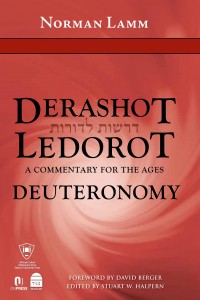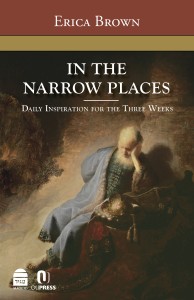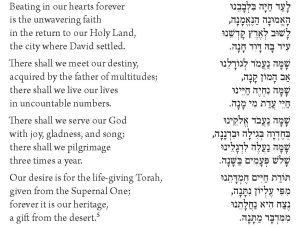Excerpted from Rabbi Shmuel Goldin’s Unlocking the Torah Text – Devarim, co-published by OU Press and Gefen Publishers
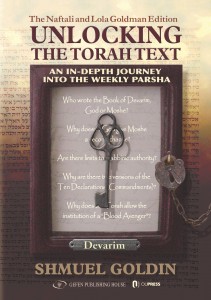 Because We Want To…
Because We Want To…
Context
The Torah abruptly interrupts the Ki Tavo tochacha – the lengthy description of potential penalties for collective national failure – in order to address a critical issue: What sins will be grievous enough to bring about the terrible curses of the tochacha?
A three-sentence answer is proposed:
And all these curses will come upon you and pursue you and overtake you, until you are destroyed, because you have not listened to the voice of the Lord your God, to observe the commandments and His statutes that He has commanded you.
They [these punishments] will be a sign and a wonder in you and in your offspring, forever.
Because you did not serve the Lord your God b’simcha, with joy, and goodness of heart, mei’rov kol, through abundance of everything.
Questions
The Torah’s response to its own implicit query is problematic on a number of counts.
First of all, the text seems unclear, even contradictory. Will the nation be punished in the future for a failure to serve God entirely, as indicated by the first sentence of the passage, or for a failure to serve God b’simcha, with joy, as indicated in the last sentence? If the latter is true, doesn’t God’s justice seems unduly harsh, to say the least? Can it be that the harrowing penalties of the tochacha will befall a people who fulfill God’s will completely, yet fail to do so “with joy”?
Why does the Torah interrupt its examination of the possible causes of the tochacha with the interjection “They [these punishments] will be a sign and a wonder in you and in your offspring, forever”?
Finally, what is the meaning of the linkage drawn in the text between the nation’s sin and the passage’s closing phrase mei’rov kol, “through abundance of everything”?
Approaches
-A-
Before addressing the flow of this three-sentence passage as a whole, we turn to its most problematic components.
Confronting the phrase “Because you did not serve the Lord your God b’simcha, with joy, and goodness of heart,” numerous authorities raise the obvious question: Can it be that God would visit the severe punishments of the tochacha upon a people whose only sin is the absence of joy?
Unwilling to accept this possibility, authorities as disparate as Rabbi Menachem Mendel Morgensztern of Kotzk (the first Kotzker Rebbe), the Chatam Sofer and Rabbi Baruch Halevi Epstein suggest a rereading of the text. This phrase, these scholars contend, should not be read “because you did not serve the Lord your God with joy” but, instead, “because with
joy [i.e., joyfully] you did not serve the Lord your God.” The nation will be punished not for the absence of joy in their fulfillment of God’s law but for the presence of joy in their defiance of that law.
Other scholars, in contrast, fully embrace the possibility that the nation could be severely punished for the absence of “joy” in their observance of God’s law. Rabbeinu Bachya ben Asher, for example, explains that “joy in the performance of a mitzva is a mitzva unto itself, meriting its own distinct reward.” An individual who fulfills God’s will grudgingly, therefore, transgresses a fundamental commandment and becomes liable for punishment.
Centuries later, Rabbi Chaim of Volozhin, the founder of the first great Lithuanian yeshiva, further expounds upon the essential nature of joy in the performance of mitzvot. Service performed grudgingly at another’s behest, this scholar argues, carries the character of “the service of slaves” executed to satisfy the whim of a hated taskmaster. An individual who
observes God’s will reluctantly, therefore, treats God as an “enemy” and will ultimately pay a heavy price.
Rabbi Shmuel Bornstein, the second Rebbe of the Sochatchover dynasty, argues that the presence of joy and personal gratification in any societal enterprise is critical to the success and continuity of the enterprise itself. Absent simcha, all communal endeavors run the risk of descending into dissension, rivalry and strife. Only a generation lacking joy in their service of God could have evidenced the baseless hatred that, according to Talmudic testimony, caused the destruction of the Second Temple. To this day, Rabbi Bornstein adds, the act of “gladdening” a bride and groom at their wedding remains a critical mitzva. All effort must be made to ensure that this couple’s initial step towards the creation of a Jewish home and the
perpetuation of the Jewish nation will be rooted in sustaining simcha.
-B-
Moving to the close of the passage, numerous scholars struggle with the Torah’s puzzling contention that the people will be punished for sinning mei’rov kol, “through abundance of everything.” What connection between abundance and sin, these authorities ask, does the Torah implicitly draw in this statement?
Following Rashi’s lead, some scholars reinterpret the words mei’rov kol to mean “while you yet possessed an abundance of everything.” The nation, these authorities contend, will be condemned for its lack of hakarat hatov (appreciation) for the gifts bestowed upon them by God during times of plenty. This sentiment is reflected in Rabbi Natan’s famous maxim in Pirkei Avot, “He who neglects the Torah in wealth shall, in the end, neglect it in poverty.”
A literal interpretation of the phrase mei’rov kol, however, projecting abundance not only as the backdrop for sin but as a catalyst for sin, can be defended on the basis of numerous warnings in the Torah. The powerful caution recorded in Parshat Ekev serves as a prime example:
Be careful lest you forget the Lord your God by not observing His commandments, His laws and His statutes, which I command you today. Lest you eat and be satisfied, and build good homes and settle down. And your cattle and your sheep will increase, and silver and gold will increase for you, and all that you have will increase. And your hearts will become haughty and you will forget the Lord your God Who took you out of the land of Egypt, from the house of slavery.
Material wealth, the Torah warns, can blind the people to the limitationsof their own power, causing them to forget their ultimate dependence upon God. The nation could easily be led to sin, “through abundance of everything.”
-C-
Adopting an alternate approach, the Meshech Chochma ingeniously interprets the entire sentence as a cohesive whole: “Because you did not serve the Lord your God with joy, and goodness of heart, through abundance of everything.”
The nation will fail to serve God, this scholar maintains, specifically because of the inappropriate “joy and goodness of heart” that they will experience in response to “an abundance of everything.” Quoting the prophet Hoshea, the Meshech Chochma explains that the Jew is enjoined from sharing in “the exultation of [other] nations.”
In contrast to those who celebrate physical abundance itself, the Jew is meant to celebrate what that abundance reflects: the clear favor that he has found in God’s eyes. By failing to identify the bounty they receive as a God-given gift, by celebrating abundance rather than its source, the nation will set the stage for their own tragic descent into sin.
-D-
The sixteenth-century scholar Rabbi Moshe Alshich addresses the apparent internal contradiction in the short three-sentence passage. Will the people be punished, asks the Alshich, for failing to observe God’s law entirely, as the first sentence of the passage suggests, or will they be punished for failing to observe God’s law with joy, as the last sentence suggests?
To resolve this contradiction the Alshich maintains that throughout the tochacha the Torah actually references two distinct populations. The first of these groups, those who “have not listened to the voice of the Lord” and have thus turned their backs on the commandments completely, will merit total destruction. The second group, however, those whose sin is limited to
a failure to serve God with simcha, will be punished less severely.
-E-
A final, global approach to the entire passage before us might be suggested. In three sentences, step by step, God conveys a unified, powerful message to the nation.
When you do something because you have to, and not because you want to, you will ultimately fail.
1. First God identifies the ultimate failure that will give rise to the horrors of the tochacha: “…because you have not listened to the voice of the Lord your God, to observe the commandments and His statutes that He has commanded you.” Your global failure to observe My law will condemn you to severe punishment.
2. In the final sentence of the passage, however, God backs up and notes the origins of that failure. “Because you did not serve the Lord your God b’simcha, with joy, and goodness of heart, mei’rov kol, through abundance of everything.” You will not abruptly abandon the observance of My law. Instead the roots of your failure will trace to an earlier time when you observed the law, but without passion or joy. Tragic consequences will result from this fatal flaw. Success in our shared enterprise can only be achieved if you invest yourselves in the process, if you derive personal significance, meaning and
gratification from our relationship. Your failure to find the simcha inherent in the observance of the divine law will inexorably lead to total abdication of that law.
3. In the midst of this discussion of cause and effect in the development of communal sin, the Torah outlines the true extent of the tragedy through a striking interjection: “They [these punishments] will be a sign and a wonder in you and in your offspring, forever.” The clearest arena of your failure will be the arena of intergenerational transmission. If your observance is absent passion, meaning and significance, you may yet go through the motions. Your children, however, will not. That which you perform grudgingly, they will abandon entirely. Consequently, these punishments will truly become “a sign and a wonder in you and in your offspring, forever.”
Points to Ponder
I believe that one of the greatest failings in today’s modern Orthodox community is the absence of simcha in the performance of mitzvot.
While we proclaim loyalty to the laws of the Torah, our actual ritual observance is often pro forma, habitual, even grudging, with little passion or meaning marking the proceedings.
The signs of this phenomenon in our communities are ubiquitous, and include:
- the half-empty sanctuaries on Shabbat morning until midpoint in the prayer services when the pews finally begin to fill
- the absence of positive Shabbat-related activities in many homes, e.g. zemirot (Shabbat songs), Torah discussion and study, special Sabbath dress and decorum, as the letter of the Sabbath law is observed while its spirit is ignored
- the emptiness of the prayer experience on Shabbat and throughout the week, at services marked by the participants’ lack of emotional involvement and by side conversations that often drown out the prayers themselves
- the advent of shortcuts to make religious life “easier” – professionally prepared Purim baskets, catered Shabbat meals, Pesach vacations – taking the place of the family-focused preparations and observances that traditionally involved the entire family in the celebration of these occasions
Sadly, the unintended intergenerational consequences of this phenomenon are evident, as well:
- the diminishing participation of community teenagers in any form of worship on Shabbat morning
- the graduates of Modern Orthodox high schools who abandon Shabbat and kashirut observance within a few years of their graduation
- the growing number of young men and women who become totally disenfranchised from Jewish observance shortly after arriving at the college campus
- the development of “half-Shabbat” – observing some Shabbat laws yet ignoring others, particularly the prohibition of texting friends on Shabbat
- The vexing problem of alcohol and drug abuse within the observant high school community as our children search for fulfillment elsewhere
The message of the tochacha is frighteningly clear. Absent passion in our religious observance, the transmission of any tradition to our children will become increasingly difficult. A religion that does not speak to their hearts may, tragically, be abandoned.
To address the problem, we cannot start with our children, but rather with ourselves. Only if we find simcha shel mitzva – the joy inherent in the performance of the mitzvot – in our own lives can we hope to foster such simcha in theirs. Only if we search for personal meaning in our observance of God’s law do we stand a chance of passing that observance on to the
next generation.
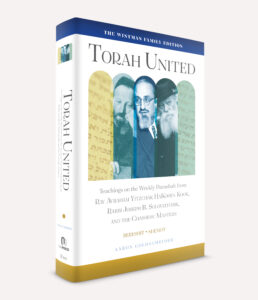 Holy and Whole
Holy and Whole
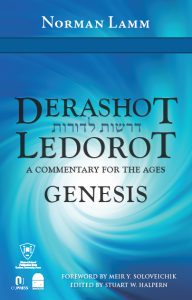


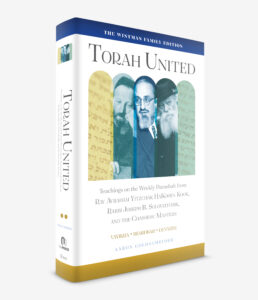 The Pomegranate Jew and the Date Jew
The Pomegranate Jew and the Date Jew